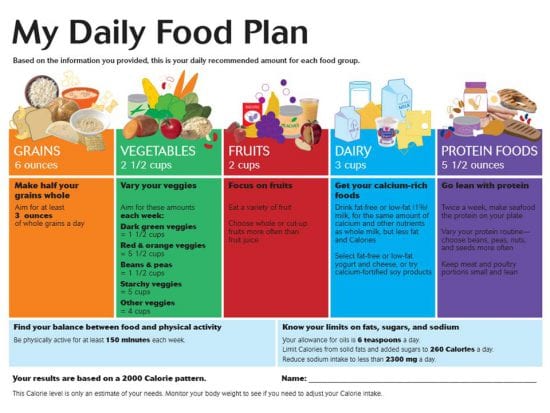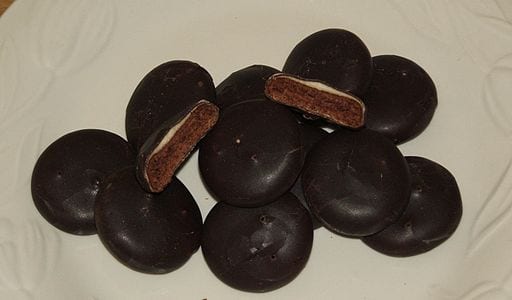Could government guidelines for a diet low in healthy fats be making our children sick? The numbers and new research suggest this may just be the case. From 2003 to 2011, for instance, ADD/ADHD rates increased by 43%, and continue to rise. The number of kids on antidepressants jumped 50% from 2005 to 2012, with over 7 million children now taking psychoactive drugs.
In 2015, 6 million children in the U.S. were diagnosed with ADD/ADHD and treated with Ritalin, Adderall, and related drugs. While this means that only two out of three kids with diagnosed ADHD are treated, some experts feel that not enough children are being medicated. This is backwards reasoning that fails to look at the cause of ADHD. Over 2.1 million kids in the U.S., meanwhile, are taking anti-depressants, according to 2017 statistics.
There is no sign that trends in these ailments are reversing, but the good news is that there are practical steps you can take to prevent or alleviate these disorders. Adding vitamins and healthier food to your child’s diet will provide essential nutrients that are missing in the Standard American Diet.

New research is discovering nutritional solutions to mental health issues, pointing to vitamin supplementation and better diet as the most effective solution for mental health issues. Studies show that certain fats make excellent antidepressants. Even severe depression and schizophrenia have been successfully treated with vitamins and diet.
The good news is that you can keep kids happy and healthy by changing their diet. Your children can benefit from proven research which is not yet widely known or accepted. The bad news is that you have to be willing to buck traditional nutritional and medical advice.
There are many plusses to treating mental health issues with diet instead of drugs. Let’s compare diet to Ritalin, the most common psychoactive drug given to kids:
| Dietary Approach to ADHD: | Ritalin: |
| No side effects. | Long list of side effects including nervousness, tics, insomnia, weight loss, psychosis, etc.
|
| Lower cost. | The cheapest discounted Ritalin will cost about $400 per year for 30-40 mg per day. Full price and higher dosage could easily triple that amount to $1,200. |
| Long-lasting improvement: Mental health benefits from dietary supplements can last for at least one year after stopping supplements. | Ritalin works only for as long as it is taken.
|
Before we discuss diet, let’s take a look at how started down this path of declining mental and physical health.
Replacing Fat with Sugar
In the 1970s, the nutrition advice of the U.S. government underwent a radical change in an effort to stem rising heart attack rates in men. Wanting a quick solution, politicians seized on the results of the earliest studies, ignoring researchers who cautioned them to wait until all the data was in. Worse yet, the new nutrition guidelines targeted adult men, ignoring children’s differing needs. The assumption that the new guidelines were safe for all has since been proven incorrect. The diet, moreover, did not prevent male heart attacks.
The new policy recommended eating a carbohydrate-loaded diet and restricting fats, especially saturated fats. People stopped eating animal fats, and ate more sugar, a simple carbohydrate. Manufacturers “improved” tasteless, boring, fat-free snack foods by adding sugar. The resulting products were sold as health food, while butter and fatty meats were said to be dangerous. Sugary foods were even marketed as low-fat and heart-healthy, despite being mostly devoid of nutrients.

The new food items were a win for food companies because they were cheap to produce and had shelf lives stretching far into the future. Some breakfast cereals were over 50% sugar, while claiming to be good for children. Now that we have adult-onset diabetes in kids under ten, we’re beginning to see that sugar was never just a source of empty “fat-free” calories.
Inexpensive high-fructose corn syrup (HCFS) was first marketed in the late 1960s, and plugged as healthier than sugar, because fructose doesn’t raise blood sugar. But HFCS is 45% glucose, 55% fructose, while table sugar is 50% glucose, 50% fructose. There’s no great difference between the two. And while fructose doesn’t raise blood sugar, it does go straight to the liver, just like alcohol. Children who drink large quantities of sugary soda, use lots of sugar-laden ketchup, and eat sweet treats, may just end up developing non-alcoholic fatty liver disease (NAFLD).
Hidden Sugar
Today the CDC recommends limiting sugars, but other than recommending that kids under two avoid added sugar, fails to specify how much sugar is too much. We’re used to a sweet edge on food, so manufacturers add sugar to commercial foods to make them taste better. As parents and consumers, we do however, have the right to check packaged foods for hidden sugar and to choose sugarless items.
Avoiding sugar except for rare treats makes sense. According to pediatric researchers, NAFLD is now common among children, affecting 3-12% of children, in general, and occurring in 70-80% of obese children. After 2020, NAFLD will become the most common reason for liver transplants. For kids, and especially teens, obesity creates its own world of mental anguish, as obese kids often face rejection and bullying.
Sugar may create behavior issues, too. Many parents note that children are more manageable on a low-sugar diet. Kids seem to have better focus and concentration without sugar. Sugar may be harming our children’s mental health. Mental health statistics suggest that lowering dietary fats and replacing them with sugar has only made things worse.
The Wrong Fats
Until 1990, McDonald’s used beef fat to make its crispy fries taste hearty. But a consumer advocate group believing the early, flawed research results, waged war on saturated fats. McDonald’s switched to a “heart-healthy” fat for its fries.
The food industry already had an inexpensive answer to the fat conundrum. Crisco and margarine had been around since the early 1900s. These hydrogenated trans fats made from vegetable sources replaced “unhealthful” animal fats. Trans fats were vegan and miraculous for food texture—until 2001, when we found out just how bad they are. Heart inflammation and brain issues such as memory loss are just two side effects of these solid fats.
The food industry switched to liquid vegetable oils. But when repeatedly heated to high temperatures these oils produce dangerous, cancer-causing acrylamides. Eating foods deep fried in these seed oils during pregnancy deters fetal brain development. That means that families eating lots of deep-fried foods are at risk for brain issues.
Because we traded bad fats for worse fats.
Most commercial vegetable oils, for instance canola oil, are unstable seed oils, and are best avoided. Such oils are high in unhealthy Omega 6 fats and low or without beneficial Omega 3 fats. As a rule, if an oil can’t be produced outside of a factory, it is inflammatory. Inflammation is responsible for many harmful disease processes throughout the body.

Better Fats, Better Brains
If canola oil is bad for your child’s general health and brain health, what fats are good? For non-meat, non-dairy options, coconut oil, cold-pressed extra virgin olive oil, or avocado oil are all good choices. Coconut oil contains medium-chain triglycerides (MCTs) which are great for brain health and mental clarity. Avocadoes are a food source containing healthy fats.
We need healthy fats because the nervous system needs fat for proper function and because the human brain is 60% fat. Brain growth and development reach their full potential when we eat a traditional pre-industrial diet of home-cooked foods. In spite of what we now know, current CDC recommendations still advise a low-fat diet for children.
Cleveland dentist, Weston A. Price, demonstrated a number of the benefits of animal fats in the 1930s. Adding good grass-fed butter to the diet resolved nutrition and health issues in malnourished inner-city children, including tooth decay. These days, the CDC-recommended low-fat diet has left even affluent children malnourished.
Important: Fat-Soluble Vitamins D, A, and K
Parents once gave kids butter and cod liver oil rich in Vitamins D, A, and K, to keep them healthy. We ate fatty foods and foods fried in animal fats. The high-carb, low-fat trends of today’s Standard American Diet have left us literally SAD and reeling from depression. By putting nutritional fats back into the diet we can turn that frown upside down.
Vitamin D
Most people including children are, today, deficient in Vitamin D, a major cause of depression. The two sources of Vitamin D are sunshine and food. When kids play mostly indoors, they lose out on sun exposure. This means kids make less Vitamin D in their skin. Instead, they get their Vitamin D from milk with added Vitamin D2, which is inferior to the D3 we make in response to sunlight or consume from animal sources.
Animal sources are the most bio-available form of D. Bio-availability means that a nutrient source is eaten in the same form that our body uses directly. Non-bio-availability means that a chemical conversion is required, and this usually means a shortfall in that nutrient.
Why do we need Vitamin D3? Vitamin D3 acts as a hormone in the body. It helps us fight viral infections; absorb calcium for growth and maintenance; and regulate blood pressure. The mental wellness effects of D3 were well-known to traditional peoples who prized fatty fish.
Dr. Jay Wortman, a Canadian M.D. and researcher, interviewed an older First Nations man about his traditional diet, which includes oil from the oolichan fish. High in D3 and other fat-soluble nutrients, oolichan oil was described by his grandfather as “your sun in the winter”. In the far north, the mood-boosting effects of the oil are important in the long, dark winter. Another key component of that northern diet is salmon, also a fatty fish. Traditional peoples did not avoid fats; they prized them as health-giving components of a proper diet.

A diet deficient in D3 can mean poor mental and physical health. Correcting D3 deficiency may help fight autism. D3 acts to combat depression. Diagnosing and correcting a deficiency in Vitamin D3 levels should be the first line of treatment for depression. If your child suffers from depression, you will need to tackle the problem with sunshine and outdoor exercise, fatty fish, or D3 drops. You can check recommended sun exposure times for season and location here.
Vitamin A
Vitamin A is another important vitamin that fights infections, and long-term deficiency causes night blindness. A lack of Vitamin A leaves one prone to infectious diseases like pneumonia and measles. Enough Vitamin A means the ability to fight off serious infections. For school kids, that’s a big edge, especially in flu season.
Some think that a low-fat carrot muffin made with vegetable oil has enough beta carotene to provide Vitamin A. But the beta-carotene in carrots and yellow vegetables doesn’t readily convert to enough usable Vitamin A. That does not mean you shouldn’t eat yellow vegetables. It means you need to add a meat source, for instance liver, once a week, to get enough bio-available Vitamin A in your diet.
Start serving liver when children are young, and you won’t have to introduce it later. The secret is not to overcook liver, and to serve it with a smile. If kids won’t eat liver, try flavored cod liver oil for a balanced dose of A, D3 and other essential nutrients.
While Vitamin A is essential, you can get too much, so:
- Always check dosage information for your child’s age and body weight.
- Keep your pediatrician in the loop whenever you use supplements.
- Remember it is always best to get nutrients from food.
Vitamin K2
Vitamin K2 is another key nutrient we are coming to appreciate for its many health benefits. Vitamin K2 has many important and distinct functions.
K2 Functions:
- Supports brain function
- Supports growth and development
- Keeps skin healthy
- Reduced inflammation
- Prevents heart disease
- Maintains bone strength
- Prevents cancer
Eating foods with Vitamins K2, D3, and A will keep your child in good mental and physical health. We’re still learning about the best K2 food sources.
K2 Food Sources:
- Fermented foods like natto and sauerkraut
- Meats, including beef, chicken, and cured meats such as salami
- Chicken liver
- Butter and fatty cheeses
- Egg yolks
Health and dietary trends show that the outmoded low-fat, high-carbohydrate diet recommendations aren’t working. Replacing fats with sugar, damages the health. Yet we stick with poor government advice. Mental health issues, childhood obesity, and diabetes are epidemic. Yet these urgent issues have not made a dent in the anti-fat CDC guidelines. Happily, parents have the power to make food choices for their children.
Real Food and Fats for Better Mental and Overall Health
Simple diet choices can have major impact. Serve kids real foods like eggs scrambled in grass-fed butter instead of breakfast cereal. Use full-fat cheese and olives on a lunch salad, and nourishing meats and fish for dinner. You don’t have to labor for hours, just plan ahead when shopping. Fish and hamburgers each take 20 minutes, tops. Frozen veggies like cauliflower, broccoli and spinach can be cooked with butter and full-fat cream or coconut cream. Blend veggies and cream with an immersion blender and a few seasonings for a hearty, filling soup. Add eggs instead and bake a casserole that can also be packed as tomorrow’s lunch along with a handful of nuts.
Cooking real food doesn’t have to be hard, and kids will find the fats so satisfying and filling that they won’t be looking for overpriced between-meal snacks.
This writer strongly believes that the evidence is sufficient and urgent enough for parents to make bold dietary decisions for their families. Our children’s mental and physical health are at stake. Our national institutions show little interest in revoking long-held and long-discredited nutritional advice. But there’s no time to wait. It’s up to us to protect our children.
Found what you just read useful? Why not consider sending a donation to our Kars4Kids youth and educational programs. Or help us just by sharing!
